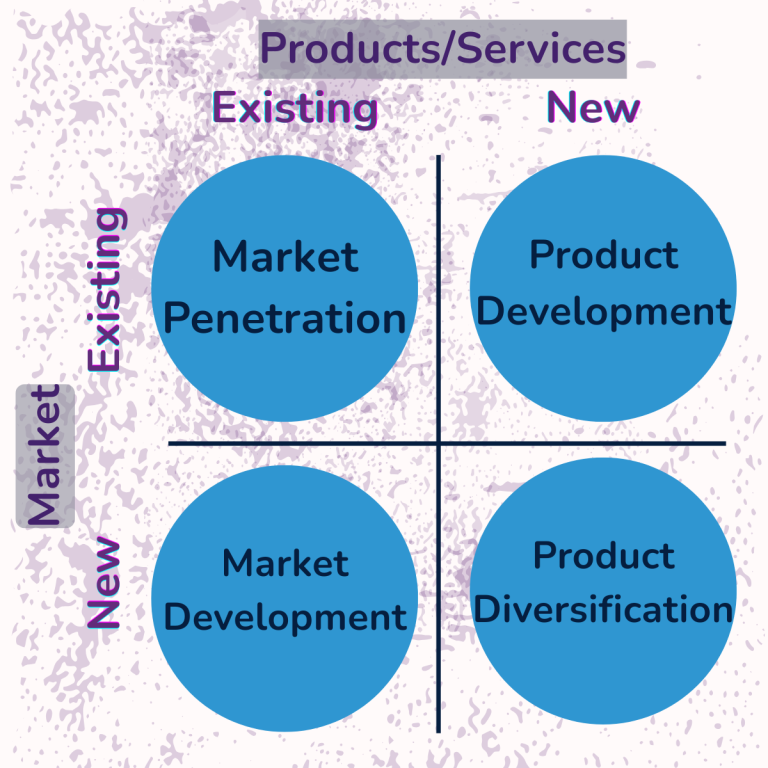
Ansoff Matrix
The Ansoff Matrix is a strategic planning tool that helps businesses decide how to grow by analysing whether to enter new or existing markets with new or existing products. It outlines four key strategies: market penetration, product development, market development, and diversification.
How do you use the Ansoff Matrix?
🎯 Who Uses It
This model is essential for:
– Business students studying strategy or marketing
– Product managers and C-suite execs planning growth
– Agencies and consultants shaping client roadmaps
📆 When It’s Useful
Use the Ansoff Matrix when:
– Launching new products or services
– Expanding into new regions or segments
– Reviewing annual business strategy
– Aligning growth plans with risk appetite
💡 Why It Matters
The Ansoff Matrix doesn’t exist in a vacuum. It becomes powerful when paired with models like SWOT Analysis, PESTLE, and Porter’s Five Forces to map internal strengths, external pressures, and competitive landscape. This layered approach supports better decisions and reduces risk.
Market Penetration
What: Selling more of your existing products in your current markets
Who: Used by established brands defending market share
When: Best for low-risk growth via promotions, pricing, or increasing usage
Why: Often the first step — strengthen your core before expanding
Prodcut Development
What: Creating new products for your existing customers
Who: Ideal for innovation-focused teams and product managers
When: When customer loyalty is strong, but needs are evolving
Why: Increases revenue per customer, but carries R&D risk
Market Development
What: Taking existing products into new customer markets or segments
Who: Used by scale-ups, export-led firms, or digital-first brands
When: When your core product is proven but growth has slowed
Why: Good for unlocking volume, but requires market insight
Diversification
What: Launching new products into entirely new markets
Who: Used by conglomerates, risk-tolerant startups, and visionaries
When: High-risk, high-reward scenario or long-term repositioning
Why: Diversifies income streams and reduces dependence on one area
©Copyright. All rights reserved.
We need your consent to load the translations
We use a third-party service to translate the website content that may collect data about your activity. Please review the details in the privacy policy and accept the service to view the translations.